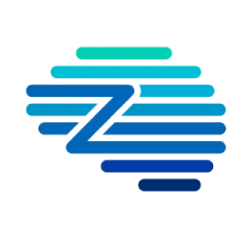In today’s competitive business environment, leveraging the right Supplier Management tools for procurement performance management is essential for organizations aiming to optimize their supply chain operations and drive strategic value. By adopting advanced procurement tools, businesses can streamline processes, improve supplier relationships, and gain critical insights into spending patterns. These tools not only enhance operational efficiency but also empower procurement teams to make data-driven decisions that align with broader financial goals, ultimately capturing the attention of the C-suite and driving long-term success.
Procurement is a critical function within an organization as it deals with the acquisition of goods and services. More often than not, procurement is viewed as a support function and a cost center. However, the right procurement strategies have the capabilities to drive business growth. Communicating procurement’s value to the C-suite, especially to CFOs, will not only help you get the funds and resources to drive your strategic agenda forward, but it will also bridge the gap between finance and procurement.
In US enterprises, this is especially critical due to pressure from quarterly earnings reporting, Sarbanes-Oxley (SOX) compliance, and P&L impact visibility.
CFOs will be the biggest advocate within your organization and catalyze the changing perception of procurement as a strategic function. Now that we have established the need to communicate procurement performance to finance, let us look at how and what to communicate.
The Role of Procurement Performance Management in US Enterprises
In order to bridge the gap between procurement and finance, the first thing one must do as a procurement expert is to understand what matters the most to finance.
Zycus recently concluded a webinar with the Sourcing Industry Group (SIG), where Joseph Martinez, CSP, C3PRMP, Global Chief Procurement Officer Bank of New York Mellon (Retired) along with Richard Waugh, VP, Corporate Development at Zycus discussed
- What metrics matter the most to CFOs
- Making a compelling ROI case for investment in procurement technology
- Delivering the elevator speech or value proposition
- Tying procurement goals and objectives with organizational goals.
These priorities align closely with US CFO expectations around EBITDA impact, cash flow improvement, and risk-adjusted ROI.
Achieving Excellence: The Hackett Group’s Story with Zycus Generative AI
Witness The Hackett Group’s journey toward achieving excellence in procurement. This video highlights their strategic use of Zycus Generative AI to overcome obstacles and set new benchmarks in the industry. See Their Journey – Click to Watch!
What Procurement Metrics Matter Most to US-Based CFOs
CFOs & Financial Performance:
Revenue is the single most important metric of value for every organization. However, profitability, savings, and return on investment is equally important to finance. Creating a pitch that highlights the return on investment in procurement technology, process or resources would be the best way forward to demonstrate procurement’s impact on the company’s bottom line.
“At the end of the day, finance is going to expect you to show them the money” - Richard Waugh
Now, creating a value proposition that CFOs can relate to is tricky. As with all fine pitches, finance will need CPOs to come in with clean data and provide hard evidence of dollars saved.
So the next step would be to choose the right procurement objectives and KPIs that have the potential to positively impact the company’s bottom line. Objectives need to be aligned with your company’s overall goals and KPIs accurately tracked. Measuring your procurement performance is therefore mandatory.
“Edward Deming used to say That which is valued is measured. That which is measured gets done. I can tell you that That which gets done, gets rewarded. You need to make sure that cost savings methodology are aligned and defined with finance” –Joseph Martinez
In the US, these metrics should directly link to P&L, SG&A reduction, working capital optimization, and cost of goods sold (COGS).
Top Tools for Procurement Performance Management in the US Market
Some enablers or tools for Supplier performance evaluation, to help you get clean data, track relevant KPIs and gather insights that resonate with finance are
1. Savings management
A savings management tool is for procurement leaders to identify areas of cost savings, track and measure the savings, and derive insights for CFOs. These insights will ultimately help C-suite to allocate the funds to business critical areas.
This aligns with CFO expectations around financial reporting, budget reforecasting, and capital allocation common in US public companies.
iSave is an example of such procurement software tools that allows you to :
- Calculate savings by comparing actual spending vs your baseline.
- Map savings generated by procurement to organizations’ top line, profit and loss, cash flow, cost of goods sold, and balance sheet, etc.
- Attribute savings to business strategy, process efficiency, or market fluctuation by categorizing and segregating them appropriately.
Savings management tools will help your CFOs to visualize the savings potential you identify.
Learn more about iSave here- Financial Savings Management Software
2. Benchmarking
Peer-to-peer benchmarks and community intelligence are other sources of data that should be tracked. Tools like Merlin Community Intelligence (MCI) help you compare your performance against your past performances as well as against industry benchmarks.
For US teams, this benchmarking can be used in budget presentations and to justify investments in procurement transformation initiatives.
Benchmarking against industry standards will help you articulate your value proposition to CFOs credibly.
3. Intake management
Intake management involves managing the requests for procurement and ensuring that they are processed in a timely and effective manner. Intake management solutions like iRequest allow for intra and inter-team collaborations, giving you greater visibility into the process. An efficient process translates into less maverick spending, thereby contributing to cost savings opportunities for your organization.
This is especially relevant for US organizations concerned with compliance, auditability, and maverick spend control under SOX guidelines.
4. Risk management
Risk management tools give you timely information that has the potential to save millions of dollars. Merlin for Risk (iRisk) is an example of one such tool. With iRisk, you can provide visibility of potential risks like wastage, fraud, supply chain disruptions, etc to your C-suite stakeholders, including CFOs. Identifying such risks early on will have significant financial repercussions.
US-specific use cases include monitoring suppliers for OFAC compliance, cybersecurity risks, contract exposure, and force majeure clauses.
Download our whitepaper: The Why, What And How of the supplier management in procurement
Scalability and Flexibility in Procurement Tools
As organizations grow and evolve, their procurement needs change, often requiring more advanced capabilities to handle increased complexity. Supply chain tools that align with procurement performance management can easily adjust to these new demands without the need for significant additional investment.
In the US mid-market and enterprise segments, scalability ensures ROI without overspending on unused features.
Scalability allows companies to start with a basic setup and gradually add features or modules as their requirements expand. For instance, a small business might initially need only basic procurement functionality, such as purchase order management. However, as the business grows, it might require more advanced features like supplier management, spend analysis, or contract lifecycle management. Scalable procurement tools supporting performance management enable this growth by offering modular features that can be activated as needed.
Flexibility in procurement tools refers to their ability to adapt to various business models, industries, and specific organizational needs. Flexible tools offer customization options, allowing businesses to tailor the software to their unique processes without requiring extensive IT intervention. For example, a company in the manufacturing sector might need a procurement tool that integrates seamlessly with their supply chain management system, while a service-oriented business might prioritize features like contract management and compliance tracking.
Integration with core US enterprise tools like Oracle, SAP, QuickBooks, and Workday is critical for smooth finance-procurement workflows.
Explore Zycus’ Generative AI procurement software
Moreover, the flexibility of procurement tools extends to their integration capabilities. As businesses adopt more specialized software solutions for different functions, the ability of a procurement tools to integrate smoothly with existing systems (e.g., ERP, financial software) becomes crucial. This integration not only streamlines workflows but also ensures that data flows seamlessly across the organization, reducing redundancy and improving accuracy.
For CFOs, scalability and flexibility are particularly attractive because they represent a low-risk, high-reward investment. A scalable tool grows with the business, ensuring that the company is not paying for features it doesn’t need yet, while flexibility allows the tool to adapt to changing business environments, supporting long-term strategic goals.
Integration with core US enterprise tools like Oracle, SAP, QuickBooks, and Workday is critical for smooth finance-procurement workflows.
CFOs & Environmental and Social Performance:
According to a survey report by Deloitte Global and Forbes Insights on CFOs: Benefits of ESG investment, more than half of respondents indicated a positive impact on revenue growth and overall company profitability.
This trend is reflected in US investor reporting frameworks such as SEC ESG proposals, CDP disclosures, and shareholder activism.
Interestingly, based on the global reporting initiative (GRI), CFOs have started increasing their focus on sustainability and social metrics in addition to traditional financial metrics.
As a procurement leader, you have the unique opportunity to articulate your value creation not just through cost savings, but also through metrics like % of spend on sustainable products & services, supplier sustainability ratings, diversity of supplier base, etc.
What are the top key performance indicators for procurement? Here is a compilation of The 11 Most Important KPIs to Unlock Sustained Procurement Performance in 2023
Conclusion
In conclusion, pitching procurement performance management to the CFO will involve understanding what metrics matter to CFO the most. Procurement can demonstrate its contribution to an organization’s bottom line by presenting relevant data and metrics on cost savings using latest tools and technology like savings management, industry bench-marking, risk management and Intake management. In addition, procurement can highlight strategies that are saddled between the intersection of financial, environmental, and social value creation, thereby proving to be of strategic value than merely a support function.
In the US context, this means linking outcomes directly to EBITDA impact, SOX compliance, and investor expectations.
Watch the on-demand webinar on Pitching Procurement Performance to CFOs to gain insights from industry expert and senior finance leader, whose purview includes procurement. In the webinar, you will hear a CFO’s perspective and understand how to bridge the gap between procurement and finance.
Book a demo today to explore how advanced procurement performance management tools can help your organization align financial, environmental, and strategic goals while effectively showcasing value to your CFO.
Related Read:
- Procurement automation: How can it help in procurement transformation?
- Understanding Blockchain in Procurement and Its Impact
- Blog – An Overview of S2P KPIs, The Balancing Act & Benchmarks
- Procurement in Value Chain for Business Advantage
- White Paper – Unraveling Cognitive Procurement: Unlocking Efficiency With AI
- White Paper – A CFO’s Guide to Procurement and Invoice Management Benchmarking
- Blog – Supplier Management–Benefits, Process, & Best Practices
- Solution: Supplier Management Software
- Solution: End-to-End Supplier Risk Management Software Powered by GenAI




























































